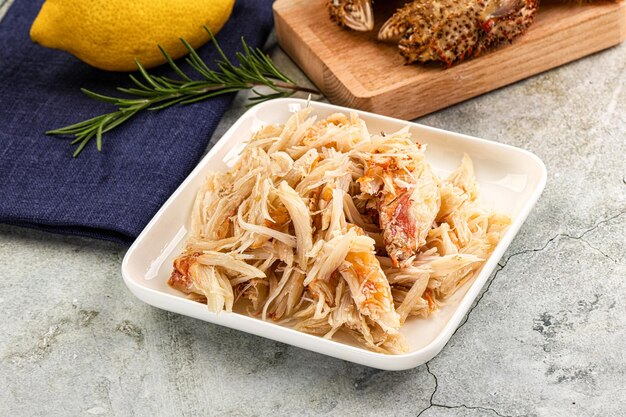How Long Can You Keep Leftover Spaghetti in the Fridge?
Picture this: you've had a busy weeknight, and you've managed to whip up a tasty spaghetti meal for dinner. But as often happens, you've overestimated the portions, and now you're left with a pot of delicious spaghetti staring back at you, questioning its fate. How long is it safe to keep this leftover spaghetti in the fridge? And how do you make the most of it while ensuring it remains fresh and safe to eat? Let's take a closer look at spaghetti storage, safety tips, and more.
🕒 Understanding the Shelf Life of Leftover Spaghetti
The Basics of Pasta Storage
Refrigerated Shelf Life: Generally, leftover spaghetti can be safely stored in the refrigerator for 3 to 5 days. After cooking, bacteria start to rapidly multiply, especially if the food is left at room temperature for too long. Refrigeration significantly slows down bacterial growth, preserving your food longer.
Factors Influencing Shelf Life
- Storage Conditions: Proper storage is crucial. Store your spaghetti in an airtight container to minimize exposure to air, which can promote bacterial growth.
- Ingredients and Toppings: If your spaghetti includes perishable toppings such as seafood or dairy-based sauces, it may spoil faster than plain pasta.
- Initial Freshness: The fresher your ingredients, the longer your pasta will last when stored.
🍝 Best Practices for Storing Leftover Spaghetti
Cooling and Storing
- Rapid Cooling: Once you've finished your meal, promptly cool down the leftover spaghetti. Dividing it into smaller portions can help cool food faster.
- Airtight Containers: Store spaghetti in airtight containers or cover plates with plastic wrap to prevent moisture loss and odor absorption.
Tips for Promoting Freshness
- Labeling: Consider labeling containers with the date of storage to keep track of freshness.
- Keep Sauces Separate: If possible, store the pasta and sauce separately to maximize their freshness. Combining different moistures and pH levels can promote faster spoilage.
🌡️ Recognizing Spoiled Spaghetti
Signs of Spoilage
- Appearance: Discoloration or patches of mold.
- Smell: A sour or off odor can indicate spoilage.
- Texture: Sliminess is a strong indicator that pasta has gone bad.
When in Doubt, Throw It Out
It’s better to err on the side of caution. Spoiled spaghetti can cause foodborne illnesses, so when signs of spoilage appear, dispose of the food immediately.
🔄 Reheating and Repurposing Leftover Spaghetti
Reheating Methods
- Stovetop: Add a bit of water or broth to a pan and gently heat the spaghetti on medium, stirring often.
- Microwave: Use a microwave-safe dish, cover it loosely with a lid or plastic wrap, and add a splash of water before reheating.
Tip: Stir occasionally for even heating and to prevent hotspots.
Creative Ways to Repurpose
- Spaghetti Pie: Combine with eggs, cheese, and vegetables for a baked pasta pie.
- Pasta Salad: Chill and toss with fresh veggies and vinaigrette for a refreshing salad.
- Soup: Add to a broth-based soup for a pasta and vegetable combination.
📝 Quick Summary: Key Takeaways for Storing Spaghetti
Here's a handy summary to keep your spaghetti safe and tasty:
- 🗓️ Shelf Life: Keep refrigerated for 3 to 5 days.
- 🚫 Avoid: Leaving out at room temperature for extended periods.
- 🍲 Store Separately: Keep sauces separate if possible.
- 💡 Repurpose: Try innovative recipes to use leftovers creatively.
- 👃 Check: Always inspect for signs of spoilage before consuming.
FAQ About Storing Leftover Spaghetti
Can you freeze leftover spaghetti?
Absolutely! Freezing extends the life of your spaghetti up to 2 months. Ensure it's stored in airtight, freezer-safe containers to maintain quality.
How can you make leftover spaghetti taste fresh again?
Adding Fresh Ingredients: Incorporate fresh herbs, a dash of olive oil, or a sprinkle of cheese to revive flavors.
What other foods can you store with leftover spaghetti?
Pair leftovers with ingredients like grilled chicken, roasted vegetables, or additional sauces to create new meals.
🍽️ Bringing It All Together
Storing leftover spaghetti effectively involves being aware of its potential shelf life and using strategies to keep it fresh while minimizing waste. Whether you’re keen on creating an entire new dish or simply plan to reheat last night’s dinner, understanding food storage is key to enjoying delicious meals safely. Now, the next time you overestimate your pasta portion, you can confidently save those extras knowing they’ll be enjoyed without the risk of spoilage. Happy dining!
